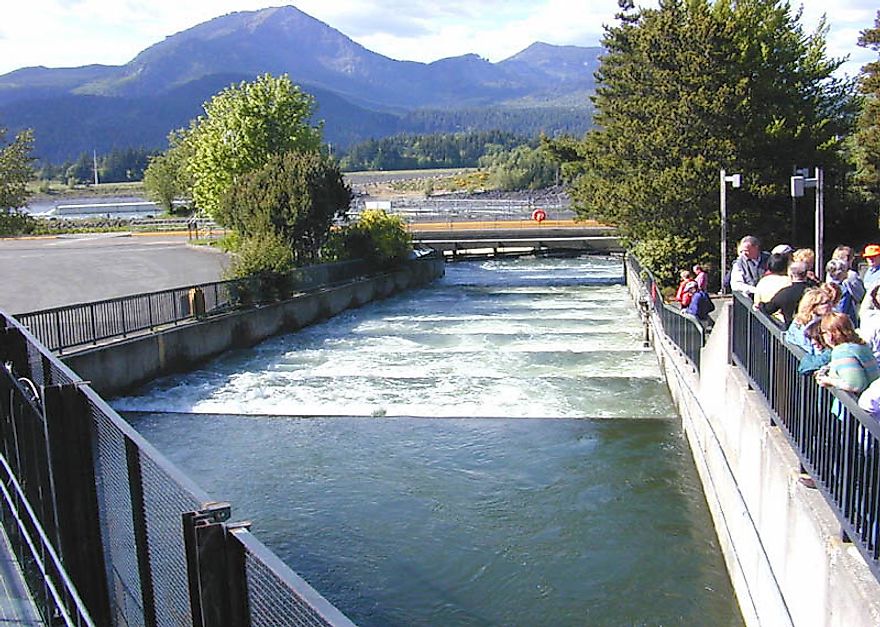What Is The Importance Of A Fish Ladder?

What Is A Fish Ladder?
Fish ladders can be found along important fish migration routes. These structures are located in waterways, usually rivers, alongside manmade or natural obstructions. Dams, waterfalls, and locks are all examples of obstructions that impede fish migration patterns. The fish ladder (also known as fish steps, fish pass, or fishway) assists fish in crossing these difficult obstacles by providing an alternative route. The principal characteristic of fish ladders is in the design, which consists of small, shallow steps that fish are able to jump. These steps progressively climb over the obstacle and allow fish to reach the open waters on the other side. The water running over fish ladders must be controlled so that it attracts the attention of fish, but that it is not too strong for fish to swim against.
Fish Ladders In History
Fish ladders can be traced back to the 1600s in France. The first fish ladders were built with bunches of tree limbs that allowed fish to cross difficult channels of water. By 1837, Richard McFarlan patented the first fish ladder. His version was used to help fish cross the dam at his hydro-powered lumber mill in New Brunswick, Canada. The idea traveled across the Atlantic Ocean to Ireland by 1852, when a fish ladder was built to encourage salmon migration where fisheries had been unsuccessful.
Use of fish ladders continued to spread and in 1880, the first fish ladder of the US was built in Rhode Island. It was originally built along the wooden Pawtuxet Falls dam, but was later torn down when the state replaced the wood with concrete in 1924. With the progression of industrialization throughout North America and Europe, the number of locks and dams continued to increase, contributing to a growing need for fish ladders.
Fish Ladder Models
Throughout the years, various fish ladder models have been utilized. These include the following:
Baffle Fishway
Baffle fishways manipulate the the water current to allow fish to swim around obstructions.
Rock-Ramp Fishway
The rock-ramp fishway uses large rocks and logs to create small pools of water between steps. This allows fish to jump from one pool to the next without fighting a strong current.
Fish Elevator
A fish elevator begins with a collection area at the bottom of the obstacle. Once the collection area is full, the fish are corralled into a hopper (like an elevator car) that carries them up and over the obstacle.
Pool and Weir
The pool and weir model is similar to the rock-ramp fishway. Instead of stones and logs, however, this model uses cement to create miniature dams and pools of water. This allows fish to jump from pool to pool and cross the obstacle.
Fish Siphon
The fish siphon veers off the principal waterway, running parallel to the river. Once it bypasses the obstruction, it rejoins the waterway on the other side.
Vertical Slot Fish Passage
The vertical slot fish passage is like the pool and weir system. Instead of jumping from pool to pool, however, this design incorporates a slot through which fish can swim to the next step.
Impact On Fish Migration
Analyses of fish ladders have identified varying degrees of effectiveness. Evidence suggests that some fish species are unable to utilize these structures. For example, research shows that only 3% of the American shad are able to cross fish ladders, 97% are unable to reach spawning territories. Additionally, some fish are believed to be affected by the electric currents that pass through metal rods in concrete fish ladders. This is particularly true of the paddlefish which has electric field sensitive organs.
Without fish ladders, however, many more fish would be prevented from reaching their breeding and feeding grounds. As human action often negatively influences wildlife, it is important to have such structures in order to reduce unwanted consequences.











